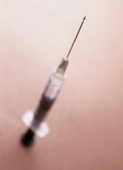- Skip Storing This Everyday Product in the Fridge Door
- Green Tea + B3 Pairing May Boost Brain Health
- Navigating Your Midlife Crisis: Embracing New Possibilities
- City Raccoons Showing Signs of Domestication
- Mapping the Exposome: Science Broadens Focus to Environmental Disease Triggers
- One Week Less on Social Media Linked to Better Mental Health
- Your Brain Changes in Stages as You Age, Study Finds
- Some Suicide Victims Show No Typical Warning Signs, Study Finds
- ByHeart Formula Faces Lawsuits After Babies Sickened With Botulism
- Switch to Vegan Diet Could Cut Your Greenhouse Gas Emissions in Half
Two Polio Vaccines May Give Greater Protection Against Crippling Disease


Using two types of polio vaccines seems to provide stronger protection against the disease and may boost efforts to eradicate polio, a new study shows.
The research involving nearly 1,000 children in India found that giving the Salk inactivated poliovirus vaccine (IPV) to those who had already been given the Sabin live-attenuated oral poliovirus vaccine (OPV) appeared to improve their immunity to the virus that causes polio.
The findings, reported in the Aug. 22 issue of the journal Science, could prove crucial in eliminating the world’s remaining pockets of polio in places such as Iraq and Syria.
“This study revolutionized our understanding of IPV and how to use it in the global eradication effort to ensure children receive the best and quickest protection possible from this disease,” study senior author Dr. Bruce Aylward, assistant director-general for Polio, Emergencies and Country Collaboration at the World Health Organization, said in a journal news release.
“IPV should be used to accelerate the eradication of the virus in populations that have limited access to vaccination,” study author Dr. Hamid Jafari, WHO’s director for polio operations and research, said in the news release. “The study has also provided the evidence for use of IPV among travelers to limit further international spread of the virus.”
Since polio vaccine was developed in the 1950s, efforts to eradicate polio have relied mainly on OPV rather than IPV. However, these findings show that giving both vaccines to patients may be the best approach.
“The global eradication effort is at a critical crossroad,” Jafari said. “Endemic polio is increasingly geographically restricted to populations in insecure and inaccessible areas. Yet the virus in these areas persists with incredible tenacity and threatens the increasingly vulnerable populations in polio-free countries with weak or conflict-affected health systems.”
More information
The World Health Organization has more about polio.
Source: HealthDay
Copyright © 2025 HealthDay. All rights reserved.










